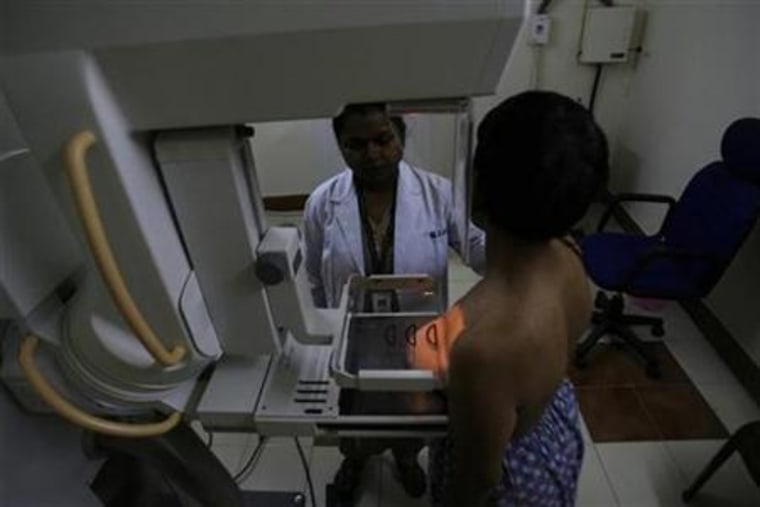Mammograms should begin at 40 for women with an average risk of breast cancer and by 30 for high-risk women, according to guidelines released on Monday by two groups that specialize in breast imaging, contradicting controversial guidelines from a U.S. advisory panel last year.
The joint recommendations from the American College of the Radiology and the Society of Breast Imaging take into account the success of annual mammography screening starting at 40, said Dr. Carol Lee of Memorial Sloan-Kettering Cancer Center in New York, whose study appears in the Journal of the American College of Radiology.
"The significant decrease in breast cancer mortality, which amounts to nearly 30 percent since 1990, is a major medical success and is due largely to earlier detection of breast cancer through mammography screening," Lee said in a statement.
The recommendations have been in the works for about two years, but they serve in part as a rebuttal to guidelines issued in November by the U.S. Preventive Services Task Force, which recommended against routine breast mammograms for women in their 40s to spare them some of the worry and expense of extra tests to distinguish between cancer and harmless lumps.
Those recommendations contradicted years of messages about the need for routine breast cancer screening starting at age 40, sparking a rebellion from breast cancer specialists who argued the guidelines would confuse women and result in more deaths from breast cancer.
"Amidst all the furor, the ACR and the SBI stand firmly behind their recommendation that screening mammography should be performed annually beginning at age 40 for women at average risk for breast cancer," Lee and colleagues wrote.
The recommendations also cover the use of magnetic resonance imaging or MRI and breast ultrasound in women who are at high risk of breast cancer because they have mutations in the BRCA1 or BRCA2 genes or a family history of breast cancer.
In these women, breast mammograms should begin by age 30, but not before age 25, when the risk of radiation exposure from the mammograms begins to outweigh the benefits of screening.
Dr. Phil Evans of the University of Texas Southwestern Medical Center in Dallas and president of the Society for Breast Imaging said the guidelines are based on the latest clinical trial data.
"Where the data was not present, we looked at recommendations that reflect expert consensus opinion," he said in a telephone interview.
He said they also help fill in some gaps in terms of how to screen high-risk women. In women who have BRCA mutations, the group recommends annual MRI screening, a more sensitive test, in addition to mammograms starting by age 30.
Women who have a greater than 20 percent lifetime risk of breast cancer based on family history should also have annual MRI scans starting at 30.
For high-risk women who cannot get an MRI, often because of claustrophobia, a breast ultrasound should be used instead, Evans said.
The two groups did not consider the harms associated with routine screening at an earlier age, such as false positive results, which the task force was trying to balance.
"The reason for that is there have been studies that have shown women would rather have their cancer found, even if it means having to have a biopsy. The harms, from most studies we've seen, did not seem to be all that real," Evans said.
